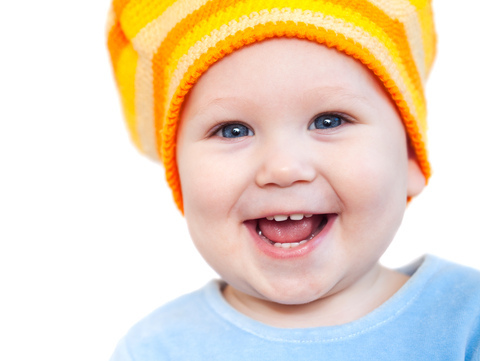November 30th, 2016

Inflamed gums are a fairly common dental issue, but unfortunately, many people don't take the problem seriously enough. If you ignore inflamed gums and continue your usual routine, you could be encouraging a much more severe inflammation problem, and the pain that goes along with that. Fortunately, it is quite easy to relieve inflamed gums if you use the tips below.
Use Soft Bristles
A soft-bristle toothbrush - the softest you can buy - is a must for anyone with inflamed gums. Anything that makes contact with your gums can cause you pain, so fine and soft bristles are always the best choice.
Use Sensitive Formula Toothpaste
The toothpaste marketed as “Sensitive Teeth Formula” contain special ingredients to help relieve sensitivity. When your gums are inflamed, even light brushing can cause some pain. Using a special toothpaste will help reduce that pain and make it easier to brush your teeth effectively. The effect becomes stronger as you use the toothpaste more, so use it for each brushing.
Visit Our Office
If your gums remain swollen for more than a few days or a week, set up an appointment with Dr. Gregory Weaver. There is a long list of conditions that could be causing your swollen gums, everything from gum disease to pregnancy, so you need to find out where your issue is coming from. Most of the time, Dr. Gregory Weaver can easily treat the swollen gum issue at our Raleigh, NC office, or can give you an effective treatment to take home.
November 23rd, 2016

At Weaver Dentistry, we have patients coming in asking us why a taste of ice cream or a sip of coffee becomes a painful experience, or why brushing or flossing makes them wince or cringe. The answer, usually, is sensitive teeth. Tooth sensitivity typically occurs when the underlying dentin layer of the tooth is exposed in the oral cavity, and most people experience tooth sensitivity at some point in their lives.
So, why do people experience sensitivity and how do you know if tooth sensitivity is something to be worried about? The most common cause of the sensitivity is exposure of the dentin, which is the layer surrounding the tooth’s nerve. Contributors to tooth sensitivity include teeth whitening and dental work such as fillings, periodontal treatment, and the placement or adjustment of braces. These are temporary and should be of no concern.
Permanent hypersensitivity, however, may require treatment at Weaver Dentistry. The first step is to determine the cause, and that begins with a visit to our Raleigh, NC office.
The reasons your teeth may become sensitive vary, but possible causes include:
- Tooth decay (cavities) near the gum line
- Cracked or fractured teeth
- Fillings that are worn
- Gum (periodontal) disease, or recession of the gums
- Worn tooth enamel
- Brushing too hard
- Consuming acidic foods
Dr. Gregory Weaver and our team at Weaver Dentistry want you to know that sensitive teeth can be treated, and the type of treatment will depend on what is causing the sensitivity. Dr. Gregory Weaver may suggest one the following treatments:
- Desensitizing toothpaste, which contains ingredients that seal off the microtubules inside the exposed dentin to reduce tooth sensitivity
- Fluoride gel, which strengthens compromised tooth enamel, helps prevent tooth decay, and decreases hypersensitivity of the teeth
- A crown, inlay, or bonding, which is used to treat tooth decay and prevents sensitivity
- A surgical gum graft. If gum tissue has been lost from the root, this procedure will protect the root and reduce sensitivity.
- Root canal: If you are experiencing severe and persistent sensitivity which cannot be treated by other means, Dr. Gregory Weaver may recommend you undergo a root canal to eliminate the problem.
If you are experiencing tooth sensitivity, give us a call today so that Dr. Gregory Weaver can provide you with some much-needed relief!
November 16th, 2016

Dr. Gregory Weaver and our team know it can be easy to underestimate the significance of baby teeth. At Weaver Dentistry, we sometimes meet parents who assume that since their child's baby teeth, also known as primary teeth, eventually fall out and are replaced, they are less important. But did you know baby teeth serve purposes other than biting, chewing, and digesting food properly?
Baby teeth are essential not only for your child’s language development, but they also serve other important functions, like contributing to the normal development of your child’s jaw bones and facial muscles. Baby teeth also reserve space for your child’s future permanent teeth.
So, when do baby teeth fall out?
A baby tooth is intended to remain in your child’s mouth until the permanent tooth underneath it is ready to take its place. Sometimes, either due to a tooth being knocked out accidentally or being removed because of tooth decay, kids lose baby teeth before the permanent teeth are ready to erupt. If a tooth is lost, the teeth on either side of the open space may possibly push into the open space. The result? There may not be enough room for the permanent tooth when it is finally ready to erupt.
If you have any questions about your toddler’s teeth, or if your child is experiencing issues that concern you, please give us a call to set up an appointment at our convenient Raleigh, NC office.
November 9th, 2016

A dental office on the cutting edge of technology offers numerous benefits to its patients. Whether you are in need of a simple cleaning or extensive restorative work, these technologies will help you stay more comfortable and give you better results than the outdated tools used in many offices. Here are some of the technologies that you can expect to see in our modern dental office:
- Digital radiography – Digital X-rays and imaging expose patients to far less radiation than traditional X-rays. Not only that, but these digital images provide a more detailed and easier-to-view snapshot of what is going on in and around your teeth. They make it easier for patients to see what's going on since we can show them right on the computer monitor. It's also better for the environment because there’s no need for the toxic chemicals used to develop traditional X-ray films.
- Panoramic X-rays – This digital X-ray gives Dr. Gregory Weaver a more in-depth understanding of the entire structure of your mouth and head than a regular X-ray. The panoramic X-ray machine rotates around your head and takes a 3D image of it, giving us a very complete picture that allows for more effective and timely treatment planning.
- Bioceramic implants, prosthetic devices, and sealants – Advances in implants and prosthetic devices over the past several decades has led to the creation of bioceramic (nontoxic) materials ideal for crowns, veneers, and implants. These materials allow for more visually appealing dental work since there are no metals used with these high-tech ceramics.
- Paperless bills and records – We all know the inconvenience of paper bills and receipts; they can create clutter and get lost. Our office has done away with this trouble by going paperless. This means you'll receive all your pertinent paperwork in your email inbox and records will be kept digitally at the office. No more wall full of patient records!
This is just an overview of the many advances that we’ve made to our Raleigh, NC office to make it cleaner, quieter, more comfortable, and more efficient, helping you spend less time in the chair and more time smiling!




